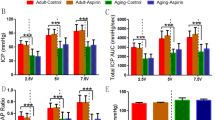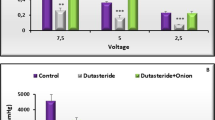Abstract
Hydrogen sulfide (H2S) is a gaseous transmitter involved in the control of vascular homeostasis. H2S is formed endogenously from L-cysteine or L-methionine by two enzymes, cystathionine beta-synthase (CBS) and cystathionine gamma-lyase (CSE), and normally circulates in blood. Studies from the past few years have demonstrated the involvement of H2S in erectile mechanisms in animal and human tissues. Exogenous H2S relaxes human and animal tissues in vitro and increases intracavernous pressure in experimental animal models. Electrical field stimulation studies on animal and human tissues have demonstrated that endogenous H2S is involved in the physiological control of penile tone. In humans, both CBS and CSE are widely expressed on trabecular muscle, implying that the smooth muscle component is the major source of H2S. Thus, the L-cysteine–H2S pathway may represent a promising target for development of new therapeutics for erectile dysfunction.
This is a preview of subscription content, access via your institution
Access options
Subscribe to this journal
Receive 12 print issues and online access
$209.00 per year
only $17.42 per issue
Buy this article
- Purchase on Springer Link
- Instant access to full article PDF
Prices may be subject to local taxes which are calculated during checkout

Similar content being viewed by others
References
Saenz de Tejada, I. et al. Trabecular smooth muscle modulates the capacitor function of the penis. Studies on a rabbit model. Am. J. Physiol. 260, H1590–H1595 (1991).
Aboseif, S. R. & Lue, T. F. Fundamentals and hemodynamics of penile erection. Cardiovasc. Interven. Radiol. 11, 185–190 (1988).
McCullough, A. R. The penis as a barometer of endothelial health. Rev. Urol. 5 (Suppl. 7), S3–S8 (2003).
Chitaley, K. et al. Antagonism of Rho-kinase stimulates rat penile erection via a nitric oxide-independent pathway. Nat. Med. 7, 119–122 (2001).
Ignarro, L. J. et al. Nitric oxide and cyclic GMP formation upon electrical field stimulation cause relaxation of corpus cavernosum smooth muscle. Biochem. Biophys. Res. Commun. 170, 843–850 (1990).
Burnett, A. L., Lowenstein, C. J., Bredt, D. S., Chang, T. S. & Snyder, S. H. Nitric oxide: a physiologic mediator of penile erection. Science 257, 401–403 (1992).
Alderton, W. K., Cooper, C. E. & Knowles, R. G. Nitric oxide synthases: structure, function and inhibition. Biochem. J. 357, 593–615 (2001).
Ignarro, L. J. Haem-dependent activation of guanylate cyclase and cyclic GMP formation by endogenous nitric oxide: a unique transduction mechanism for transcellular signaling. Pharmacol. Toxicol. 67, 1–7 (1990).
Corbin, J. D. Mechanisms of action of PDE5 inhibition in erectile dysfunction. Int. J. Impot. Res. 16 (Suppl. 1), S4–S7 (2004).
Zhao, W., Zhang, J., Lu, Y. & Wang, R. The vasorelaxant effect of H2S as a novel endogenous gaseous KATP channel opener. EMBO J. 20, 6008–6016 (2001).
Wagner, C. A. Hydrogen sulfide: a new gaseous signal molecule and blood pressure regulator. J. Nephrol. 22, 173–176 (2009).
Wang, R. Two's company, three's a crowd: can H2S be the third endogenous gaseous transmitter? FASEB J. 16, 1792–1798 (2002).
Fiorucci, S., Distrutti, E., Cirino, G. & Wallace, J. The emerging roles of hydrogen sulfide in the gastrointestinal tract and liver. Gastroenterology 131, 259–271 (2006).
Li, L. & Moore, P. Putative biological roles of hydrogen sulfide in health and disease: a breath of not so fresh air? Trends Pharmacol. Sci. 29, 84–90 (2008).
Szabó, C. Hydrogen sulphide and its therapeutic potential. Nat. Rev. Drug Discov. 6, 917–935 (2007).
Shibuya, N., Mikami, Y., Kimura, Y., Nagahara, N. & Kimura, H. Vascular endothelium expresses 3-mercaptopyruvate sulfurtransferase and produces hydrogen sulfide. J. Biochem. 146, 623–626 (2009).
Searcy, D. G. & Lee, S. H. J. Sulfur reduction by human erythrocytes. Exp. Zool. 282, 310–322 (1998).
Cheng, Y., Ndisang, J. F., Tang, G., Cao, K. & Wang, R. Hydrogen sulfide-induced relaxation of resistance mesenteric artery beds of rats. Am. J. Physiol. Heart Circ. Physiol. 287, H2316–H2323 (2004).
Yang, G. et al. H2S as a physiologic vasorelaxant: hypertension in mice with deletion of cystathionine gamma-lyase. Science 322, 587–590 (2008).
Alcorn, J. F., Toepfer, J. R. & Leipheimer, R. E. The effects of castration on relaxation of rat corpus cavernosum smooth muscle in vitro. J. Urol. 161, 686–689 (1999).
Penson, D. F., Ng, C., Cai, L., Rajfer, J. & González-Cadavid, N. F. Androgen and pituitary control of penile nitric oxide synthase and erectile function in the rat. Biol. Reprod. 55, 567–574 (1996).
Yildiz, O. et al. Testosterone might cause relaxation of human corpus cavernosum by potassium channel opening action. Urology 74, 229–232 (2009).
Bucci, M. et al. Hydrogen sulphide is involved in testosterone vascular effect. Eur. Urol. 56, 378–383 (2009).
Srilatha, B., Adaikan, P. G. & Moore, P. K. Possible role for the novel gasotransmitter hydrogen sulphide in erectile dysfunction—a pilot study. Eur. J. Pharmacol. 535, 280–282 (2006).
d'Emmanuele di Villa Bianca, R. et al. Hydrogen sulfide as a mediator of human corpus cavernosum smooth-muscle relaxation. Proc. Natl Acad. Sci. USA 106, 4513–4518 (2009).
Srilatha, B., Adaikan, P. G., Li, L. & Moore, P. K. Hydrogen sulphide: a novel endogenous gasotransmitter facilitates erectile function. J. Sex. Med. 4, 1304–1311 (2007).
Dai, Y., Chitaley, K., Webb, R. C., Lewis, R. W. & Mills, T. M. Topical application of a Rho-kinase inhibitor in rats causes penile erection. Int. J. Impot. Res. 16, 294–298 (2004).
Wang, H., Eto, M., Steers, W. D., Somlyo, A. P. & Somlyo, A. V. RhoA-mediated Ca2+ sensitization in erectile function. J. Biol. Chem. 277, 30614–30621 (2002).
Jardin, A. et al. Recomendations of the 1st international consultation on erectile dysfunction. In Erectile Dysfunction (eds Jardin, A. et al.) 711–726 (UK Health Publications, Plymouth, 2000).
McMahon, C. N., Smith, C. J. & Shabsigh, R. Treating erectile dysfunction when PDE5 inhibitors fail. BMJ 332, 589–592 (2006).
Huang, P. L. et al. Hypertension in mice lacking the gene for endothelial nitric oxide synthase. Nature 377, 239–242 (1995).
Kajimura, M., Fukuda, R., Bateman, R. M., Yamamoto, T. & Suematsu, M. Interactions of multiple gas-transducing systems: hallmarks and uncertainties of, CO, NO, and H2S gas biology. Antioxid. Redox Signal. 13, 157–192 (2010).
Salloum, F. N. et al. Phosphodiesterase-5 inhibitor, tadalafil, protects against myocardial ischemia/reperfusion through protein-kinase G-dependent generation of hydrogen sulfide. Circulation 120 (Suppl. 11), S31–S36 (2009).
Bucci, M. et al. Hydrogen sulfide is an endogenous inhibitor of phosphodiesterase activity. Arterioscler. Thromb. Vasc. Biol. 30, 1998–2004 (2010).
Shukla, N. et al. Effect of hydrogen sulphide-donating sildenafil (ACS6) on erectile function and oxidative stress in rabbit isolated corpus cavernosum and in hypertensive rats. BJU Int. 103, 1522–1529 (2009).
Costa, C. & Virag, R. The endothelial-erectile dysfunction connection: an essential update. J. Sex. Med. 6, 2390–2404 (2009).
Fung, M. M., Bettencourt, R. & Barrett-Connor, E. Heart disease risk factors predict erectile dysfunction 25 years later: the Rancho Bernardo Study. J. Am. Coll. Cardiol. 43, 1405–1411 (2004).
Solomon, H., Man, J. W. & Jackson, G. Erectile dysfunction and the cardiovascular patient: endothelial dysfunction is the common denominator. Heart 89, 251–253 (2003).
Burchardt, M. et al. Erectile dysfunction is a marker for cardiovascular complications and psychological functioning in men with hypertension. Int. J. Impot. Res. 13, 276–281 (2001).
Kostis, J. B. et al. Sexual dysfunction and cardiac risk (the Second Princeton Consensus Conference). Am. J. Cardiol. 96, 313–321 (2005).
DeBusk, R. et al. Management of sexual dysfunction in patients with cardiovascular disease: recommendations of The Princeton Consensus Panel. Am. J. Cardiol. 86, 175–181 (2000).
Guo, W. et al. Erectile dysfunction and risk of clinical cardiovascular events: a meta-analysis of seven cohort studies. J. Sex. Med. doi:10.1111/j.1743-6109.2010.01792.x.
Author information
Authors and Affiliations
Contributions
R. d'Emmanuele di Villa Bianca and R. Sorrentino researched data for the article. V. Mirone and G. Cirino made substantial contributions to discussion of content. R. d'Emmanuele di Villa Bianca and G. Cirino wrote the article and R. d'Emmanuele di Villa Bianca, R. Sorrentino, V. Mirone and G. Cirono reviewed and edited the manuscript.
Corresponding author
Ethics declarations
Competing interests
The authors declare no competing financial interests.
Rights and permissions
About this article
Cite this article
d'Emmanuele di Villa Bianca, R., Sorrentino, R., Mirone, V. et al. Hydrogen sulfide and erectile function: a novel therapeutic target. Nat Rev Urol 8, 286–289 (2011). https://doi.org/10.1038/nrurol.2011.45
Published:
Issue Date:
DOI: https://doi.org/10.1038/nrurol.2011.45
This article is cited by
-
Alleviation of impaired reactivity in the corpus cavernosum of STZ-diabetic rats by slow-release H2S donor GYY4137
International Journal of Impotence Research (2019)
-
Urothelium muscarinic activation phosphorylates CBSSer227 via cGMP/PKG pathway causing human bladder relaxation through H2S production
Scientific Reports (2016)



